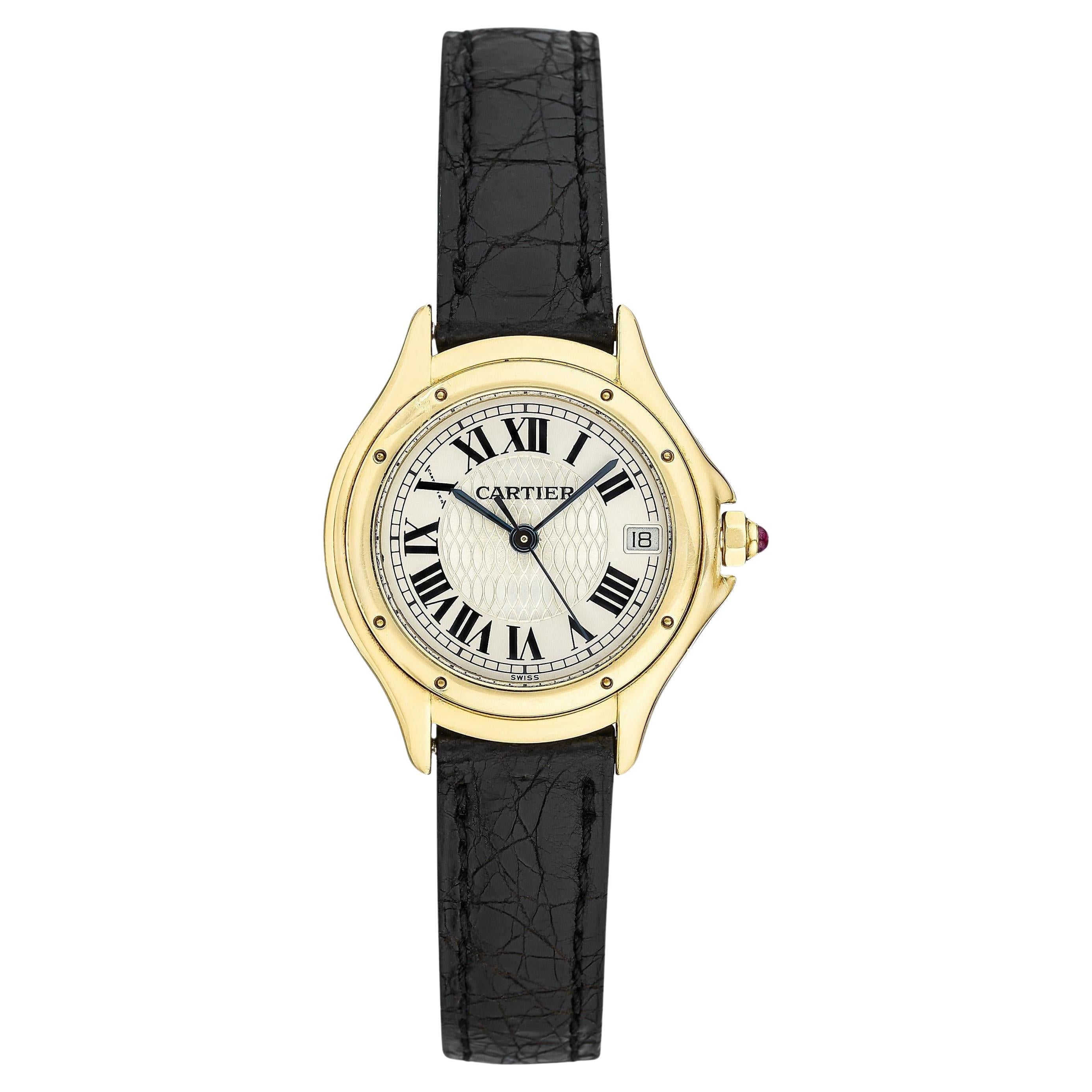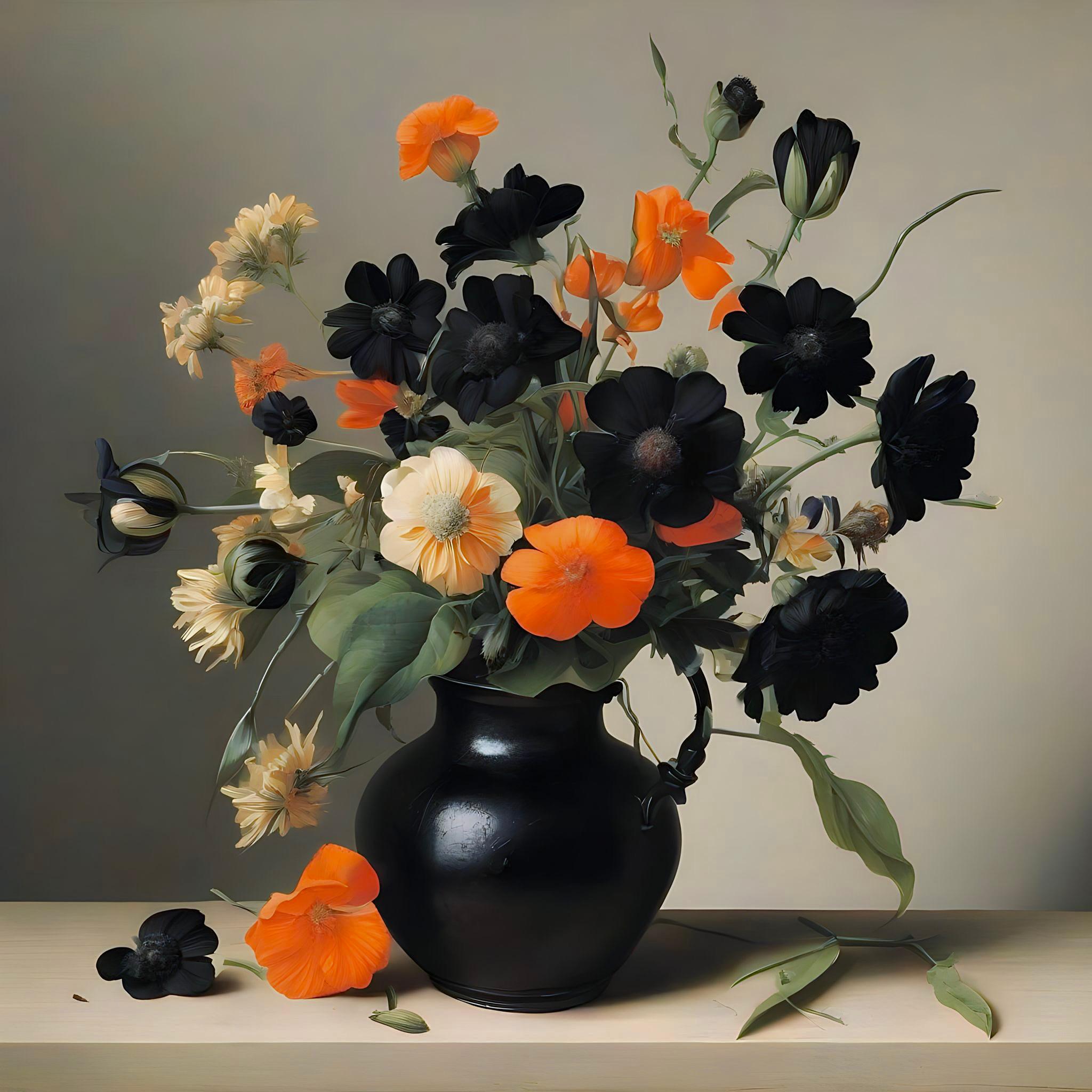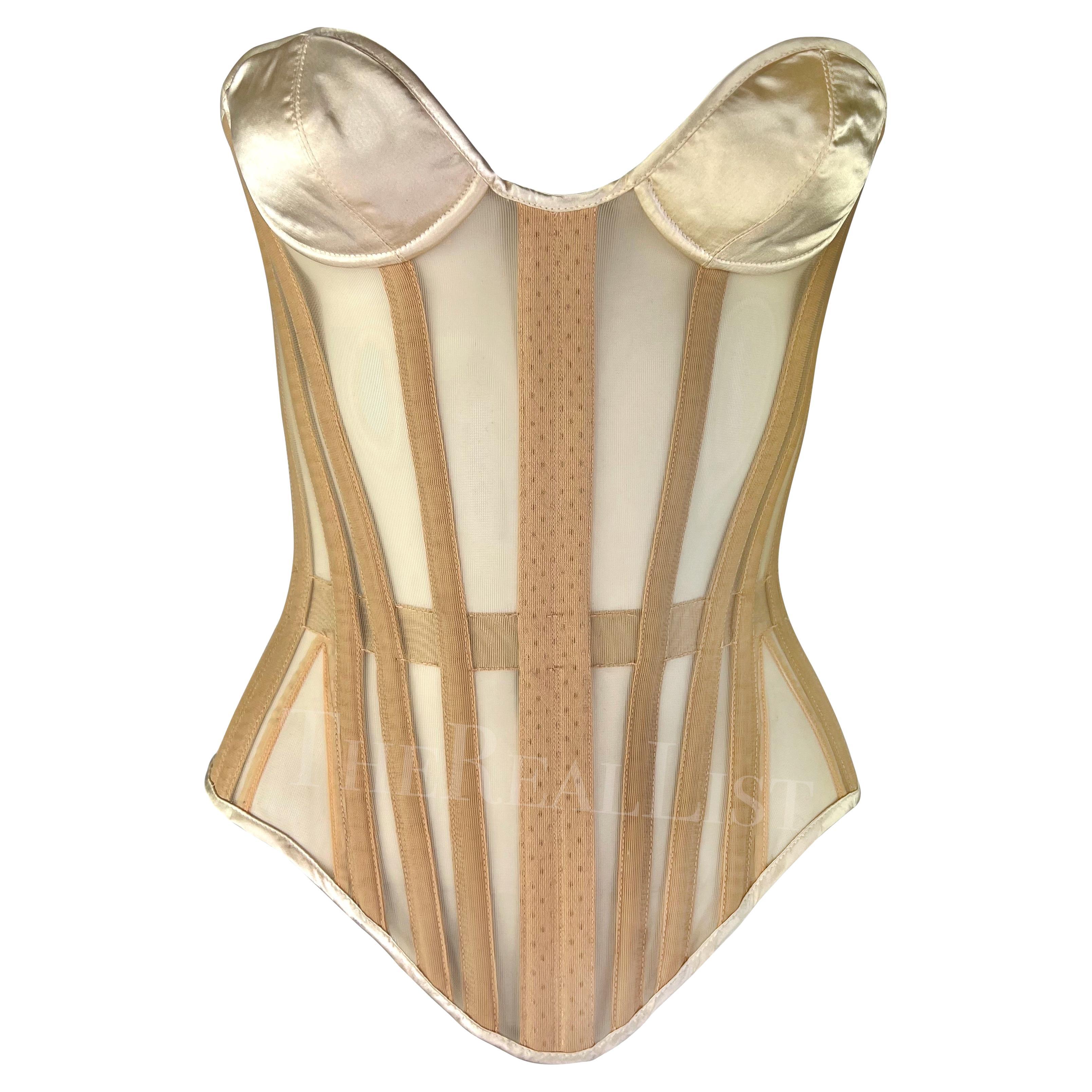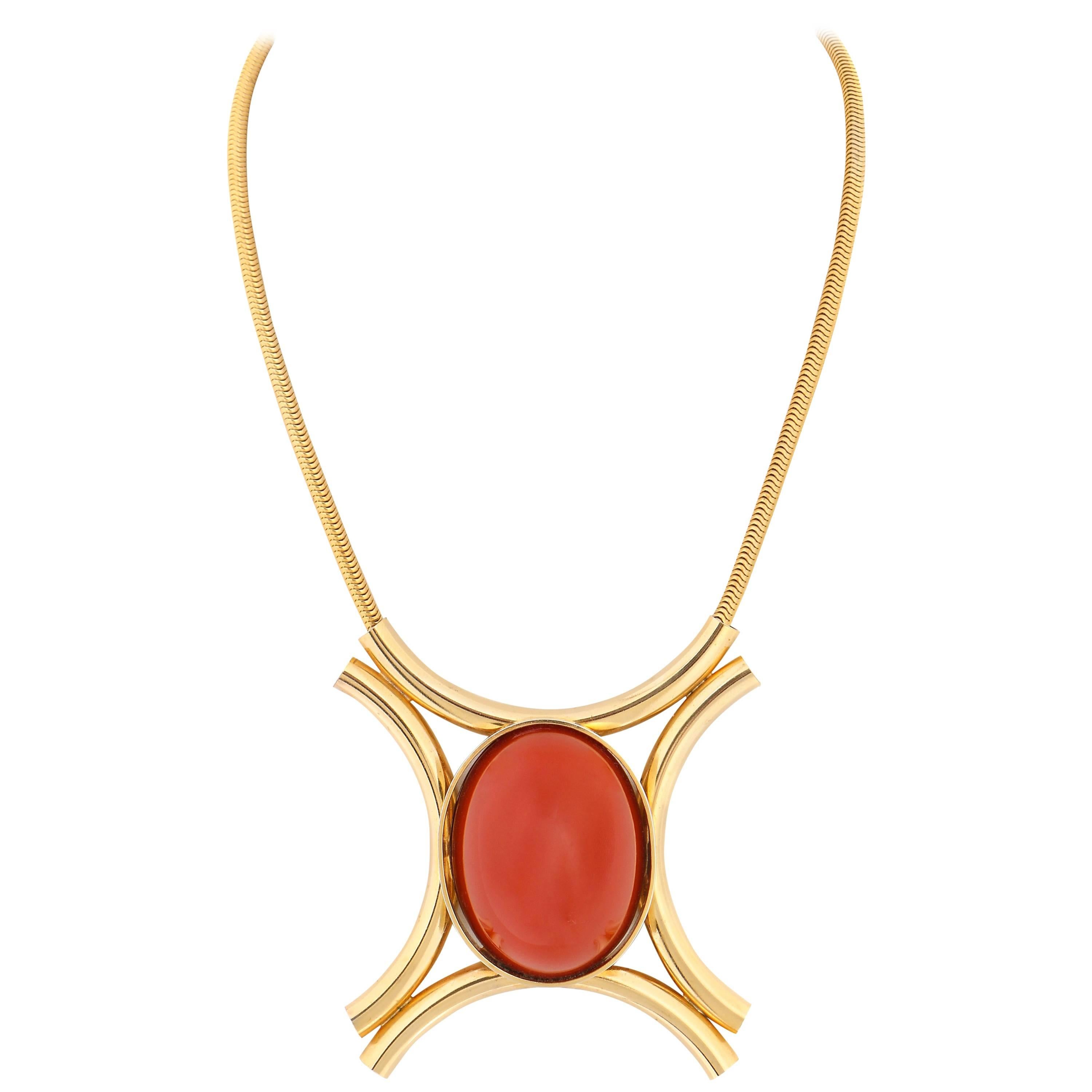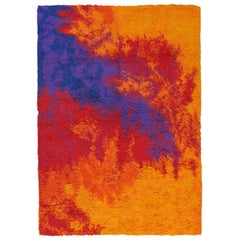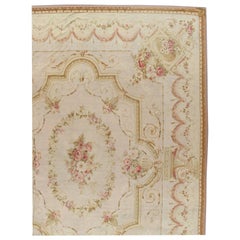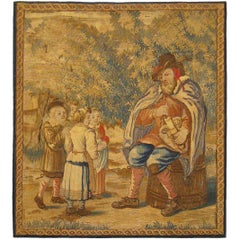Western European Rugs on Sale
619
171
11
to
551
222
801
703
788
95
67
61
24
23
9
9
5
5
4
3
3
2
2
1
1
1
119
135
365
182
98
126
114
27
11
32
14
12
20
21
22
11
52
Width
to
Length
to
711
686
126
77
75
576
224
209
110
72
13
9
8
7
6
Sale Items
Sasha Bikoff X Art Hide Faux Bois Customizable Cowhide Dans Le Bois Area Rug
By Art Hide
Located in Charlotte, NC
Dans Le Bois is more than just a rug, it's a statement. With its abstract and almost graphic-like subject matter, it truly captures the essence of the 70s. But what sets it apart is ...
Category
2010s Pakistani Art Deco Western European Rugs
Materials
Cowhide
Vintage Rya Carpet, Swedish Rug, Colorful
Located in Port Washington, NY
1960s Swedish Rya rug with a colorful, plush wool pile. Size: 4'6" X 6'7".
Category
Mid-20th Century Swedish Mid-Century Modern Western European Rugs
Materials
Wool
Antique French Aubusson Carpet, Fine Pale Pink, Rose, Taupe, Elegant Carpet
Located in Port Washington, NY
Aubusson is a town on the Ceruse River in central France. It has been famed for its carpets as well as tapestries since the 15th century. Antique Aubusson rugs made in tapestry techn...
Category
Antique Late 19th Century French Aubusson Western European Rugs
Materials
Wool
Roche Bobois Bleu RUG S .XXI - New Zealand
By Roche Bobois
Located in Valladolid, ES
Amazing and gorgeous “Galaxy” model rug in bleu nuit, handmade for Roche Robois. Large in size, this piece is a trip to outer space thanks to the infinite luminous constellations th...
Category
21st Century and Contemporary French Modern Western European Rugs
Materials
Wool, Silk
Brown and Black Italian Leather Checkerboard Rug
Located in New York, NY
A vintage Italian Art Deco rug from the mid-20th century. A true oddity. Brown and black leather squares alternate in a chessboard (checkerboard) ...
Category
Mid-20th Century Italian Mid-Century Modern Western European Rugs
Materials
Leather
Framed 18th Cent. French Rustic Tapestry, a Pedant Instructing Children in Music
Located in New York, NY
A framed French rustic tapestry from the 18th century, envisioning a pedant seated on a barrel, instructing a group children in music and the arts within a verdant setting. Enclosed ...
Category
Antique 18th Century French Tapestries
Materials
Wool
7x9.8 Ft Vintage Handmade Sun Faded Anatolian Oushak Wool Rug for Country Homes
Located in Philadelphia, PA
Our sun-faded rugs are all one-of-a-kind, hand-knotted, 50-70 year-old vintage pieces. They each boast their own singular handmade aesthetic drawn from the centuries-old Turkish rug-...
Category
Vintage 1960s Turkish Oushak Turkish Rugs
Materials
Wool, Cotton
Original Abstract Scandinavian High Pile Abstract Rya Rug Carpet, Sweden, 1960s
By Ege Rya, Verner Panton
Located in Kirchlengern, DE
Article:
High pile Rya rug
Decade:
1960s
Origin:
Scandinavia Sweden
Material:
100% cotton
This rug is a great example of 1960s pop art interior. Ma...
Category
Mid-20th Century Swedish Mid-Century Modern Western European Rugs
Materials
Cotton
1980s Gorgeous Geometric Italian Woolen Rug by Missoni for T&J Vestor
By Ottavio Missoni
Located in Milano, IT
1980s Gorgeous rug by Missoni for T&J Vestor. Pure wool Made in Italy. In excellent condition like new. This rug is a true example of amazing Italian and has Missoni label.
Dimension...
Category
Vintage 1980s Italian Mid-Century Modern Western European Rugs
Materials
Wool
Flat Weave Rug Ivory Handwoven Carpet Floral Livingroom Rugs for Sale Home Decor
Located in Hampshire, GB
This fantastic floral rug has been handwoven with a beautiful all-over floral design woven on an ivory background with cream-green, blue and ivory accents. This elegant piece's colou...
Category
1990s British Hollywood Regency Western European Rugs
Materials
Wool, Organic Material, Cotton
Postmodern Hilton McConnico Toulemonde Bochart Cat Rug, 1980s, France
By Hilton McConnico, Toulemonde Bochart
Located in Brooklyn, NY
Extremely rare rug by the iconic Tenessee-born artist and designer Hilton McConnico (Memphis 1943-Paris 2018) from the esteemed French house of Toulemonde Boc...
Category
Late 20th Century Post-Modern North and South American Rugs
Materials
Wool
Bobyrug’s Wonderful Fine Antique French Aubusson Tapestry
By Royal Manufacture of Aubusson
Located in Saint Ouen, FR
Very beautiful and fine Aubusson tapestry with a nice design with bird in the nature , and beautiful colours, entirely and finely handwoven with wool and silk, at Aubusson workshops....
Category
Early 20th Century French Aubusson Tapestries
Materials
Wool, Silk
Bobyrug’s Wonderful Fine Antique French Aubusson Tapestry
By Royal Manufacture of Aubusson
Located in Saint Ouen, FR
Very beautiful and fine Aubusson tapestry with a nice design featuring people having a picnic by the river , and with beautiful colours, entirely and finely handwoven with wool and s...
Category
Antique Early 19th Century French Aubusson Tapestries
Materials
Wool, Silk
Missoni Post-Modern Striped Rug, circa 1980, Italy, Signed
By MissoniHome, Missoni
Located in Los Angeles, CA
Attention interior designers, this is the large rug you need for that high-profile cover-worthy room you're working on. This signed Missoni rug is from the 1980s Italy and in an oh-s...
Category
Vintage 1980s Italian Post-Modern Western European Rugs
Materials
Wool
Tapestry Royal Manufacture of Aubusson, Louis XVI period 1738 at the Gobelins
By Aubusson Manufacture
Located in Madrid, ES
Tapestry from the Royal Manufacture of Aubusson, Louis XVI period , made in 1738 at the Gobelins
One panel from a series of Gobelins tapestries depicting the History of Esther, illustrating Esther seated and attended by handmaidens, one washing her feet in golden basin, another fastening a bracelet, another offering a mirror, all observed by Mordecai, woven in the workshop of Michele Audran after a design by J. F. de Troy.
The Toilet of Esther c.1778-85.Royal Collection Trust-Queens Audience Chamber
Windsor Castle
The Sketches for the Esther Cycle by Jean-François de Troy (1736)
“and the maid was fair and beautiful; whom Mor’decai, ..., took for his own daughter.” (Est. 2:7)
A supple and undulating genius, both a flattering portraitist and a prolix history painter, as well as a brilliant genre painter, in a gallant or worldly vein, Jean-François de Troy (Paris, 1679 – Rome, 1752), solicited, although he had passed the threshold of old age, a new royal commission up to his ambitions. To obtain it, he submitted – successfully - for the approval of the Bâtiments du roi (administration), seven modelli painted in 1736 with his usual alacrity.
Inspired by one of the most novelistic texts of the Old Testament, the Book of Esther, these sketches in a rapid and virtuoso manner were transformed by the artist, between 1737 and 1740 into large cartoons intended to serve as models for the weavers of the Gobelins factory. Showing undeniable ease and skill in the composition in perfect harmony with the sensitivities of the times, the tapestry set met with great success.
The Story of Esther perfectly corresponded to the plan of the Bâtiments du roi to renew the repertoire of tapestry models used for the weavers of the royal factories while it also conformed to the tastes of Louis XV’s subjects for a fantastical Orient, the set for a dramatic tale in which splendour, love and death were combined. Indeed, no tapestry set was woven in France during the 18th century as often as that of Esther.
The series of modelli painted by de Troy during the year 1736 looks to the history of French painting and decoration under Louis XV as much as it does the history of the Gobelins. It probably counts among the most important rococo pictorial groups to have remained in private hands. First the Biblical source illustrated by De Troy which constitutes the base of one of the richest iconographical traditions of Western art will be considered. Then the circumstances and specific character of French civilisation during the reigns of Louis XIV and Louis XV which contributed to making the theme of Esther a relevant subject, both attractive to contemporaries and remarkably in line with the sensitivities of the time will be elucidated.
An examination of the exceptional series of sketches united here, the cartoons and the tapestries that they anticipate as well as a study of their reception will close this essay. The Book of Esther: A scriptural source at the source of rich iconography.
The origin of the Esther tapestry set by Jean-François de Troy – origin and creation of a masterpiece
According to the evidence of one of the artist’s early biographers, the chevalier de Valory, author of a posthumous elegy of the master, read at the Académie royale de peinture et de sculpture on 6 February 1762, it was apparently due to early16 rivalry with François Lemoyne (1688-1737), his younger colleague who had precisely just been appointed First Painter to the King in 1736, that had encouraged François de Troy to seek a commission allowing him to show off his ease and his promptitude at the expense of a rival who was notoriously laborious: “M. De Troy, retaining some resentment of the kind of disadvantage which he believed to have suffered compared with his emulator looked to regain some territory by making use of the facility his rival did not possess.
Lemoyne was excessively long in the creation of his works,and M. De Troy of a rare celerity: consequently, with this particular talent, the latter offered to the court to make paintings appropriate to be executed at the Gobelins Factory; and it is to this circumstance that we owe the beautiful series of the Story of Esther, which would be sufficient alone to give him a great reputation.”17 Beyond the suspicion inspired by the topos, which still constitutes, more or less, a tale of rivalries between artists in ancient literature, there is probably some truth in what Valory reports although A.-J. Dezalier d’Argenville (who indicates rather spitefully that de Troy did not hesitate to “cut prices” to impose himself, benefitting from the productivity assured by the unlikely rapidity of his brush)18 proves to be more evasive: “As he looked to busy himself, he had offered to make the paintings that serve as models for the King’s tapestries cheaply: which did not please his colleagues.
He was given a choice of two tapestry series to be made and he took the Story of Esther and that of Jason”.19 Whether or not the choice was actually left to de Troy (which would appear rather casual on the royal administration’s part all the same), it seems likely that the artist, whose contemporaries extol his “fire”, as the faculty of invention was then called, must have ardently aspired to the possibility of using on a very large scale the “creative genius” with which Dezallier d’Argenville credits him. The decoration of the private apartments, the fashion for which Louis XV had promoted at Versailles and Fontainebleau, offered little opportunity to excel in this area. Other than painting for altarpieces, only tapestries could allow comparison with Lemoyne who had been granted – unfortunately for him – a major decoration: the enormous ceiling of the Hercules Room at Versailles. Favoured by the recent improvement in France’s financial situation, the revival of patronage offered de Troy a commission fitting for him, in a field in which, however, he had hardly any experience.
Anxious to renew the repertoire of models available to the Gobelins factory, the Duc d’Antin, surintendant des Bâtiments du roi from 1708 to 1736 followed by his successor, Philibert Orry comte de Vignory, gave him the task of producing seven large cartoons inspired by the Book of Esther corresponding to the brilliant sketches or modelli which de Troy had produced in one go, or almost (very few preparatory drawings can in fact be linked to the Esther cycle and all seem to be at the execution stage of the cartoons).20 Subjected to the approval of the Administration des Bâtiments according to the procedure in use for projects being planned for the Gobelins, sketches made rapidly during 1736 were approved and the project launched immediately. Thereupon came the news of François Lemoyne’s death, who, ground down by work and a victim of his private torment, committed suicide on 4 June 1737.
Against all expectations, de Troy did not replace his rival in the position of First Painter (which remained vacant until the appointment of Charles Coypel in January 1747), which would perhaps have made him too obviously the beneficiary of the drama. The awarding of the position of Director of the French Academy in Rome came to console him while he had already produced (or he was in the process of finishing), in Paris, three of the seven cartoons of the cycle (The Fainting of Esther finished in 1737 and the Toilet and Coronation of Esther, both finished in 1738).
De Troy, we can see, did not follow the order of the narrative but began with the subjects which apparently offered the least difficulty because he had already depicted them, or because they fall into a strong pictorial tradition (such is the case especially for the Fainting of Esther). He had hardly settled at the Palazzo Mancini in August 1738, when his first task which awaited the new director of the French Academy naturally consisted of honouring the royal commission and finishing without delay the final cartoons of the Story of Esther after the sketches he must have taken with him. As prompt as ever, de Troy discharged himself of the execution of the four remaining cartoons in only two years, by beginning with the largest format which allowed him to strike the imagination and to impose himself as soon as he arrived on the Roman stage: the Triumph of Mor’decai which was finished in 1739 (like Esther’s Banquet).
The following year, the Mor’decai's Disdain and The Sentencing of Haman were brought to an end in the same Neo-Venetian style, obviously tributary to Veronese with its choice of “open” monumental architecture which is characteristic of the entire cycle.21 The series, it should be noted, was almost augmented with some additional scenes in the mid 1740s. Indeed, the first tapestry set finished at the Gobelins in 1744 proved to be unsuitable for the arrangement of the Dauphine’s apartments at Versailles for which it had been intended to decorate the walls the following year (cf infra). Informed of this, de Troy, considering that the story of Esther offered “several good subjects,” immediately offered to illustrate one or new subject among those “which could appear to be the most interesting”.
The directeur des Bâtiments Orry, who managed the State’s accounts, obviously judged it less costly to have one of the tapestries widened to fill in the end of the Dauphine’s bedroom,22 which has probably deprived us of very original compositions, because de Troy had already illustrated the most famous themes, those that benefitted from a strongly established iconographical tradition and from which it was not easy to deviate
The Tapestry Set of the Story of Esther
Placed on the tapestry looms of the Gobelins at the end of the 1730s in Michel Audran’s workshop, the cycle created by de Troy aroused true infatuation. The few hundred tapestries made between 1738 and 1797 – all in high-warp tapestry and woven in wool and silk except for four in low-warp made in Neilson’s workshop – show the impressive success of a tapestry set that was without any doubt the most frequently woven of the 18th century in France.
29 Only three cartoons had been delivered by de Troy in 1738 when the first tapestry set was begun by Audran under the expert eye of Jean-Baptiste Oudry to whom the Directeur général des bâtiments, Philibert Orry had assigned the (weekly) supervision of the weaving. During the summer of 1738, the piece of the Fainting of Esther, which Oudry judged to be admirable, was finished.
During the winter of 1742, Oudry informed Orry that about two ells of the Triumph of Mor’decai had been made “with no faults”,that the Coronation of Esther was finished and that the Esther at her Toilet “a very gracious tapestry” was “a little over half” finished. Exhibited at Versailles in 1743, these two last pieces were admired by Louis XV and the Court.
On 3 December 1744, the set of seven tapestries was finally delivered to the Garde Meuble. It was intended, the honour was not slight, to decorate the apartments of the Infanta Maria Teresa Rafaela of Spain whose marriage to the young Dauphin Louis-Ferdinand had been fixed for the following year (it took place on 23 February 1745). Apparently it was thought that the theme of Esther the biblical heroine and wife of a foreign sovereign was appropriate for the apartments of the Spanish Dauphine.
As early as the month of March, the architect Ange-Jacques Gabriel informed de Troy that her grand cabinet was decorated with the “Esther tapestry set” specifying however that “for lack of two small or one large piece, we have not been able to decorate the end of the room”. This difficulty led immediately to the Banquet episode being woven a second time in two parts (they were delivered to the Garde-Meuble on 30 December 1746) to garnish the panels on each side of the bed of the Dauphine who would hardly enjoy them (she died on 22 July 1746 and the decoration was installed for the new Dauphine Maria Josepha of Saxony).
The appearance of the set’s remarkable border, which imitated a richly sculpted wooden frame, should be mentioned. Conceived in 1738 by the ornamentalist Pierre Josse-Perrot and used in the later weavings until 1768, it tended to reinforce the resolutely painterly appearance of the tapestry set which, in this regard, pushed the art of tapestry as far as its ultimate mimetic possibilities. With the exception of Mor’decai's Disdain which had been removed earlier, the “editio princeps” of the story of Esther (from then on in nine pieces) remained at Versailles until the Revolution. Of the eight surviving tapestries, four are at the chateau of Compiègne and four belong today to the Mobilier National. No less than seven tapestry sets reputed to be complete (one of them in fact only had six tapestries) would be produced officially at the Gobelins up to 1772.
Literature:
1- The Œuvres mêlées of an emulator of Racine, the Abbé Augustin NADAL thus include an Esther. Divertissement spiritual which is exactly contemporary with Jean François de Troy’s cycle since it was performed in 1735 and published in Paris three years later.
2-Le Siècle de Louis XIV, 1751, 1785 ed., p. 96-97 for French ed.
3- Lemoyne and de Troy had been obliged to share the First Prize in the competition organised in 1727 between the most prominent history painters of the Académie Royale.
4- Mémoires…, pub. L. DUSSIEUX et al., 1854, II, p.265.
5-The fact that de Troy, at the risk of falling out with his colleagues, did not hesitate to make use of prices in order to convince the new directeur des Bâtiments Philibert Orry, is confirmed by Mariette who adds tersely “it caused much shouting” (pub. 1851-1860, II, p. 103).
6- Abrégé de la vie des plus fameux peintres…, ed. 1762, IV, p. 368-369 20 Early comments on the painter are inclined to present him as a kind of “pure painter”, doing without the medium of drawing, a few intermediary studies between the Esther sketches and the large cartoons at the Louvre nevertheless show that de Troy used red chalk (see in the catalogue, the notice for the Meal of Esther and Ahasuerus under the entry drawing) to change one or other figure.
7-C. GASTINEL-COURAL (cat. exp. PARIS, 1985, p. 9-13) as well as the article by J. VITTET, exh. cat. LA ROCHE-GUYON, 2001, p. 51-55.
8-The Hermitage in St. Petersburg conserves five tapestries of these two royal gifts whose provenance still awaits elucidation (as far as we are aware). In 1766, the Grand Marshal of Russia, Count Razumovski (or Razamowski), acquired the Fainting and the Banquet extracted from the sixth weaving (J. VITTET, 2001, p. 53).
9- Lettres écrites de Suisse, d’Italie…,quoted by J. VITTET, op. cit., p. 54.
10-The tapestry set remained in the hands of a branch of the Hapsburg-Lorraine family until 1933 (ibid. P. 54).
11-Quoted by Chr. LERIBAULT, 2002, p. 97, note 269.
12-Y. CANTAREL-BESSON, 1992, p. 241.
Catalogue
The Esther at her Toilet
Oil on canvas, 57 x 51 cm Provenance: Painted in 1736 at the same time as the six other modelli of the Story of Esther intended to be presented, for approval, to the direction des Bâtiments du Roi; perhaps identifiable among a lot of sketches by Jean-François de Troy in the post mortem inventory of the amateur, historian and critic Claude-Henri Watelet (1718-1786) drawn up on 13 January 1786 and following days (A.N. T 978, n° 30) then in the sale of the property of the deceased, Paris, 12 June 1786, n° 33; Paris, François Marcille Collection (who owned a series of six sketches from which the Triumph of Mor’decai was missing, see infra); Paris, Marcille Sale, Hôtel Drouot, 12-13 January 1857, n° 36; Asnières, Mme de Chavanne de Palmassy ( ?) collection; Paris, Galerie Cailleux; Paris, Humbert de Wendel collection (acquired from the Galerie Cailleux in 1928); by inheritance in the same family; Paris, Sotheby’s, 23 June 2011, n° 61. In order not to add unnecessarily to the technical commentary on each work, the catalogue raisonné by Chr. Leribault which contains a substantial bibliography on the series should be referred to. The other bibliographical references only concern the publications and exhibitions to have appeared and been presented more recently. Bibliography and Exhibitions: Chr. LERIBAULT, 2002, n° P. 247 (repr.); E. LIMARDO DATURI, 2004, p. 28; Exh. cat. NANTES, 2011, p. 138, n° 34, referred to in note 1; Sotheby’s catalogue, Tableaux anciens et du XIXe siècle, 23 June 2011, n° 61 (repr.).
Related Works:
Tapestry cartoon: The cartoon (oil on canvas, 329 x 320 cm), the third made by the artist in Paris after the sketches had been approved by the direction des Bâtiments, is in the Louvre (Inv. 8315). It previously bore the painter’s signature and the date 1738 (inscriptions which are found on the tapestries). The royal administration paid 1600 livres for it on 21 June 1738 and it was exhibited at the Salon in the year of its creation.
Summary Biography
1679 (27 January): Baptism in Paris (Parish of St. Nicolas du Chardonnet) of Jean-François de Troy, son of the painter François de Troy and Jeanne Cotelle, sister of the painter Jean II Cotelle.
1696-1698: Studies (apparently rather turbulent) at the Académie royale de peinture et de sculpture.
1698-1708: First trip to Italy. Is obliged to leave Rome in January 1711 after a tempestuous affair (a duel?), de Troy extends the traditional Roman experience as a pensionnaire at the Académie de France by also visiting Tuscany where he stays for a long time, Venice (his art in face has a strongly Venetian character) and Genoa.
1708: De Troy (whose father had been elected Director of the Académie royale de peinture et de sculpture on 7 July) is agréé and immediately received at the Académie with Apollo and Diana Piercing with their Arrows the Children of Niobe (Montpellier, Musée Fabre) on 28 July.
1710: First royal commission, paid for on 10 May (a sketch representing “the Promotion of the Order of the Holy Spirit” for the tapestry series of the History of the King).
1716: Jean-François de Troy is elected Assistant Professor at the Academy.
1720: He is appointed Professor.
1723: The artist creates the double portrait of Louis XV...
Category
Antique Early 18th Century French Baroque Western European Rugs
Materials
Silk, Wool
Modern Black and White Spanish Carpet -FINAL CLEARANCE SALE
Located in Alessandria, Piemonte
Montesinos modern particular black carpet with white signatures.
nr. 1296 -
Category
21st Century and Contemporary Portuguese Modern Western European Rugs
Materials
Wool
Aubusson Flat Weave Re-Creations
Located in WEST HOLLYWOOD, CA
Rug Number
31410
Size
7' 11" X 10' 0"
Design
Aubusson
Collection
Flat Weaves
Material
Wool
Texture
Pile Weave
Origin
China
Age
New
Category
2010s Chinese Western European Rugs
Materials
Wool
Mehraban Vintage French Needle Point
Located in WEST HOLLYWOOD, CA
Meticulous flat weave wool and silk vintage French Needle Point rug depict a man and a woman enjoying each other's company in the middle of paradise. A magical and enchanting detail ...
Category
Antique 1850s French Western European Rugs
Materials
Wool, Silk
French Aubusson Needlepoint Room Size Paneled Floral Garden Wool Rug 20th C
Located in Big Flats, NY
French Aubusson Needlepoint Room Size Paneled Floral Garden Wool Rug 20th C
Measures - 122" x 96.5"
Category
20th Century French Western European Rugs
Materials
Wool
Claesson Koivisto Rune handwoven rug "Bredband, blågrön"
By Märta Måås-Fjetterström AB 1, Claesson Koivisto Rune
Located in Båstad, SE
"Bredband, blågrön" flatweave rug, designed by architects Claesson Koivisto Rune in 2006. Executed in 2010 at Märta Måås-Fjetterström AB in Båstad, Sweden, by artisan weaver Berit Hå...
Category
Early 2000s Swedish Minimalist Western European Rugs
Materials
Linen, Wool
Claesson Koivisto Rune handwoven rug "Forell, vinterstorm"
By Claesson Koivisto Rune, Märta Måås-Fjetterström AB 1
Located in Båstad, SE
"Forell, vinterstorm" flatweave rug, designed by architects Claesson Koivisto Rune in 2006. Executed in 2013 at Märta Måås-Fjetterström AB in Båstad, Sweden, by artisan weaver Eva Fo...
Category
Early 2000s Swedish Minimalist Western European Rugs
Materials
Wool, Linen
Claesson Koivisto Rune handwoven rug "Satellit, grå"
By Claesson Koivisto Rune, Märta Måås-Fjetterström AB 1
Located in Båstad, SE
"Satellit, grå" flatweave rug, designed by architects Claesson Koivisto Rune in 2006. Executed in 2012 at Märta Måås-Fjetterström AB in Båstad, Sweden, by artisan weaver Monica Nilss...
Category
Early 2000s Swedish Minimalist Western European Rugs
Materials
Wool, Linen
2.7x4.8 Ft Vintage Sweden Scandinavian Kilim 'Flatweave' with Geometric Patterns
Located in Philadelphia, PA
Transport yourself to the serene landscapes of Sweden with this exquisite vintage handwoven Swedish wool kilim flatweave, a testament to the timeless artistry of Scandinavian craftsm...
Category
Late 20th Century Swedish Kilim Western European Rugs
Materials
Wool
8.5x9.2 Ft Swedish Hand-Woven Vintage Wool Kilim Rug with Geometric Details
Located in Philadelphia, PA
Transport yourself to the serene landscapes of Sweden with this exquisite vintage handwoven Swedish wool kilim flatweave, a testament to the timeless artistry of Scandinavian craftsm...
Category
Late 20th Century Swedish Kilim Western European Rugs
Materials
Wool
8.3x10.8 Ft Vintage Bosnian Kilim, Flat-Weave Rug, 100% Wool
Located in Philadelphia, PA
Enrich your living space with the rustic charm and timeless elegance of this vintage Bosnian flat-weave wool kilim. Crafted with skill and care by Bosnian artisans, this kilim is a testament to the rich cultural heritage and traditional craftsmanship of the region.
The kilim's design is characterized by its intricate patterns and vibrant colors, reflecting the unique aesthetic of Bosnian textile artistry. From geometric motifs to stylized floral designs, each element is expertly woven into the fabric, creating a captivating tapestry of texture and color.
Made from high-quality wool, this kilim boasts a soft and durable texture that is both comforting underfoot and resilient to everyday wear. Whether placed in a living room, bedroom, or kid's room, it adds warmth and character to any space, transforming it into a cozy sanctuary of style.
As a vintage piece, this Bosnian kilim...
Category
Late 20th Century Balkan Kilim Western European Rugs
Materials
Wool
Wonderful large antique French Aubusson rug
Located in Saint Ouen, FR
Exquisite large Antique French Aubusson rug from the early 20th century, meticulously handwoven in wool on Aubusson looms. Featuring a Louis XVI-style floral design in lovely light h...
Category
Early 20th Century French Aubusson Western European Rugs
Materials
Wool, Cotton
1970s Stunning Space Age Rug in Wool. Made in Italy
Located in Milano, IT
1970s Stunning space age rug with an awesome design. Pure wool made in Italy. It's excellent condition.
Dimension:
66,92" x 90,55" inches
170 cm x 230 cm
Category
Vintage 1970s Italian Mid-Century Modern Western European Rugs
Materials
Wool
Beautiful Portuguese Rug " Arraiolos " 20th Century
By Europa Antiques
Located in Madrid, ES
Beautiful Portuguese Rug " Arraiolos " 20th Century
hand made in wool
297cm x 200cm
like new
Category
20th Century Portuguese Modern Western European Rugs
Materials
Wool
7x9.5 Ft Decorative Hand-Knotted Area Rug. Vintage European Design Wool Carpet
Located in Philadelphia, PA
A finely hand-knotted vintage Turkish carpet from 1960s. The rug has even low wool pile on cotton foundation. It is heavy and lays flat on the floor, in very good condition with no i...
Category
Mid-20th Century Turkish Aubusson Western European Rugs
Materials
Wool, Cotton
Navy Carpet Aubusson Rug Area Handwoven Wool Needlepoint Home Decor
Located in Hampshire, GB
This fantastic area rug has been handwoven with a beautiful symmetrical floral design woven on a navy blue background with accents of cream green and ivory. Both the colour and desig...
Category
1990s British Aubusson Western European Rugs
Materials
Wool, Organic Material, Cotton
Traditional Green Baige Rug Carpet Aubusson Style Area Rug Wool Handwoven Runner
Located in Hampshire, GB
This fantastic area rug has been handwoven with a beautiful symmetrical floral design woven on an ivory blue background with cream green and ivory accents. This elegant piece's colou...
Category
1990s French Aubusson Western European Rugs
Materials
Wool, Organic Material, Cotton
Gianni Versace Collection Black and Gold Designer Carpet, Rug. Barocco
By Gianni Versace
Located in Berlin, DE
Extremely rare and unique carpet by Gianni Versace.
From first owner.
Carpet has light pile abrasion on one side.
Overall good condition.
Including "Certificate of Authenticity" f...
Category
20th Century Italian Modern Western European Rugs
Materials
Wool
Blush Pink Carpet Aubusson Rug Vase Floral Area Rug Handwoven Home Needlepoint
Located in Hampshire, GB
This fantastic area rug has been handwoven with a beautiful symmetrical floral design woven on an ivory background, cream green, and Rust red Blush Pink border. This elegant piece's ...
Category
1990s British Aubusson Western European Rugs
Materials
Wool, Organic Material, Cotton
Traditional Carpet Aubusson Style Area Rug Handwoven Wool Needlepoint
Located in Hampshire, GB
This fantastic area rug has been handwoven with a beautiful asymmetrical floral design woven on a red background with cream-green and ivory accents. This elegant piece's colour and d...
Category
1990s British Aubusson Western European Rugs
Materials
Wool, Organic Material, Cotton
Vintage "Wave" High Pile Rya Rug by Prinstapijt Desso, Netherlands 1970s No2
By Desso
Located in Kirchlengern, DE
Original huge Rya rug "Wave"
Decade:
1970s
Origin:
Netherlands
Producer:
Prinstapijt Desso, Netherlands
This rug is a great example of 1970s pop art in...
Category
Late 20th Century Dutch Mid-Century Modern Western European Rugs
Materials
Acrylic
Antique French Aubusson Tapestry Rare Wool & Silk Renaissance 4x5 1890 132x155cm
Located in New York, NY
Antique French Aubusson Tapestry Rare Wool & Silk Renaissance c.1890 4'4" x 5'1" 132 cm x 155cm
"This is an outstanding antique French Aubusson tapestry- This piece incorporates ...
Category
Antique 1890s French Tapestries
Materials
Wool
Traditional Carpet Floral Aubusson Rug Handwoven Wool Needlepoint Rug Home Decor
Located in Hampshire, GB
This fantastic area rug has been handwoven with a beautiful asymmetrical floral design woven on an ivory blue background with cream green and ivory accents. This elegant piece's colo...
Category
1990s British Aubusson Western European Rugs
Materials
Wool, Organic Material, Cotton
Antique French Aubusson Tapestry Hermes Mercury Wool & Silk Square 6x6 176x178cm
Located in New York, NY
Antique French Aubusson Tapestry Birds Wool & Silk Large 5x9 1900
4'10" x 9'2" 148cm x 280cm
"This is an outstanding antique French Aubusson tapestry in a fantastic large square size- This wool & silk treasure incorporates impeccable attention to detail- Depicting a scene of Hermes and Mercury...
Category
Antique Early 1900s French Baroque Tapestries
Materials
Wool, Silk
Antique French Tapestry Verdure Signed 1880 Wool & Silk 5x7 153cm x 201cm
Located in New York, NY
Antique French Tapestry Verdure Signed 1880 Wool & Silk 5x7 153cm x 201cm
A magnificent antique French tapestry depicting a castle amongst a river, verdure, and exotic birds. Beauti...
Category
Antique 1880s French Baroque Tapestries
Materials
Wool
Antique French Tapestry Verdure Fruits Noblemen 1890 Wool & Silk 6x7 183 x 206cm
Located in New York, NY
Antique French Tapestry Arts & Crafts Noblemen 1890 Wool & Silk 6x7
183 x 206cm
A magnificent antique French tapestry depicting a scene of noblemen dressed up amongst exotic fruit...
Category
Antique 1890s French Baroque Tapestries
Materials
Wool
Antique French Aubusson Rug Hand Woven 1880 6x7ft Rare Design 178cm x 206cm
Located in New York, NY
Antique French Aubusson Rug Hand Woven 1880 6x7ft Rare Design 178cm x 206cm
"This is a great example of an authentic antique French Aubusson rug. This is a very fine, flat woven pie...
Category
Antique 1880s French Western European Rugs
Materials
Wool
Vintage European Art Deco Geometric 14x14 427cm x 445cm Square Beige Rug
Located in New York, NY
Vintage European Art Deco Geometric 14x14 427cm x 445cm Square Beige Rug
"This is an exquisite, rare size vintage Art Deco rug. This unique square pi...
Category
Vintage 1950s European Art Nouveau Western European Rugs
Materials
Wool
Antique English Sky Blue Orientalist Rug
Located in Milan, IT
Clearly inspired by the vogue for oriental carpets which was at its peak around the early 20th century, this rug is distinguished by a polylobed medallion and pendants pattern floati...
Category
Early 20th Century English Belle Époque Western European Rugs
Materials
Wool
Antique French Aubusson Tapestry Birds Wool & Silk Large 5x9ft 148x280cm 1900
Located in New York, NY
Antique French Aubusson Tapestry Birds Wool & Silk Large 5x9 1900
4'10" x 9'2" 148cm x 280cm
"This is an outstanding antique French Aubusson t...
Category
Antique Early 1900s French Baroque Tapestries
Materials
Wool, Silk
Beautiful Portuguese Rug " Arraiolos " 20th Century
By Europa Antiques
Located in Madrid, ES
Beautiful Portuguese Rug " Arraiolos " 20th Century
hand made in wool
307cm x 200
like new
Category
20th Century Portuguese Modern Western European Rugs
Materials
Wool
Large Panton Style Multi-Color High Pile Rya Rug by Reichel, Germany, 1970s
By Reichel
Located in Kirchlengern, DE
Extra large rug with Panton style pattern.
Decade:
1970s
Oigin:
Germany
Producer:
Reichel Carpets, Germany
This rug is a great example of 1970s pop art...
Category
Late 20th Century German Mid-Century Modern Western European Rugs
Materials
Wool
Ettore Sottsass for Elisée Editions, Stairs Rug, Wool, Limited Ed., UK, 1985.
By Ettore Sottsass
Located in Brooklyn, NY
“Stairs” carpet, designed by Ettore Sottsass for Elisée Editions, 1985, hand-tufted virgin wool, from a limited edition of 100. Rare piece. gorgeous postmodern take on Roman trompe ...
Category
Vintage 1980s British Post-Modern Western European Rugs
Materials
Wool
Taurus Collection Striped Goat Hair Rug by Doris Leslie Blau
By Taurus
Located in New York, NY
Taurus Collection striped goat hair rug by Doris Leslie Blau
Size: 6'0" × 7'0" (182 × 213 cm)
Simple and well-executed, this new Mid-Century Modern rug from the Geometric Taurus coll...
Category
21st Century and Contemporary Turkish Modern Western European Rugs
Materials
Goat Hair
Antique Aubosson/Gobelein wall carpet, France 17th century. Verdure motif, silk
Located in Berlin, DE
Antique Aubosson/Gobelein wall carpet, France late 17th century. Verdure motif, silk
Antique Musael Aubosson tapestry made of silk and partly wool. Very fine and antique design. Dep...
Category
Antique Late 17th Century French Western European Rugs
Materials
Wool, Silk
18th Century Antique Flemish Tapestry Handmade Wool & Silk 1x8 31cm x 244
Located in New York, NY
18th Century Antique Flemish Tapestry Handmade Wool & Silk 1790
1x8 31cm x 244
"This is a very fine authentic antique Flemish tapestry made of Wool & Silk, depicting intricate desi...
Category
Antique 1790s Belgian Western European Rugs
Materials
Wool
Blue Aubusson Rug Runner Beige Handwoven Carpet Floral Livingroom Rug Home Decor
Located in Hampshire, GB
This fantastic blue runner rug has been handwoven with a beautiful all-over floral design on an ivory blue background with cream, green, and ivory accents. This elegant piece's colou...
Category
1990s French Aubusson Western European Rugs
Materials
Wool, Organic Material, Cotton
Antique French Tapestry Verdure Deer 3x6 Wool Foundation 92 x 172cm
Located in New York, NY
Antique French Tapestry Verdure Deer 3x6 3' x 5'8"
92cm x 172cm
k65101
About Us~
Welcome to Antique Rug Collection. Your #1 Source for handmade Antique Rugs & Tapestries at g...
Category
Vintage 1920s French Baroque Tapestries
Materials
Wool
1920 Antique French Aubusson Tapestry Rug Floral Vase Runner 3x10 1880 97x287cm
Located in New York, NY
1920 Antique French Aubusson Tapestry Rug Floral Vase Runner 3x10 c.1880
3'2" x 9'5" 97cm x 287cm
A magnificent antique French tapestry depict...
Category
Vintage 1920s French Baroque Tapestries
Materials
Wool
Beige Aubusson Runner Rug Floral Livingroom Rugs Magnificent Home Decor Carpet
Located in Hampshire, GB
This magnificent floral runner rug has been handwoven with a beautiful all-over floral design on an ivory-pink - Beige background with cream-green a...
Category
1990s French Aubusson Western European Rugs
Materials
Wool, Organic Material, Cotton
Antique French Tapestry Verdure Noblemen Gathering Fruit Tree 5x5 135cm x 140cm
Located in New York, NY
Antique French Tapestry Verdure Noblemen Gathering Fruit Tree 5x5 Square Tapestry 1920
4'5" x 4'7"
135cm x 140cm
A magnificent antique French tapestry depicting a scene of people ...
Category
Vintage 1920s French Baroque Tapestries
Materials
Wool
Antique Turkish Oushak Sivas Fine Geometric Overall Rug 11x16 1900 328cm x 457cm
Located in New York, NY
Antique Turkish Oushak Sivas Fine Quality Geometric Overall Rug
10' 9" x 15'10' 11 x 16 328cm x 457cm Circa 1900
"This is an exceptional rare antique Sivas Oushak rug with an inc...
Category
Antique Early 1900s Turkish Turkish Rugs
Materials
Wool
A Pair of Aubusson Runner Rug Handwoven Carpet Floral Stair Runner Home Decor
Located in Hampshire, GB
This magnificent pair of stair runner rugs has been handwoven with a beautiful symmetrical floral design on an ivory blue background with cream-green and ivory accents. This elegant ...
Category
1990s French Aubusson Western European Rugs
Materials
Wool, Organic Material, Cotton
1920 Antique English Needlepoint Tapestry Wool & Silk 3x5 82cm x 158cm
Located in New York, NY
1920 Antique English Needlepoint Tapestry Wool & Silk 3x5 2'8" x 5'2" 82cm x 158cm
"Beautiful English antique needlepoint tapestry with an exotic, scenic design . Creating dimension...
Category
Vintage 1920s English Western European Rugs
Materials
Wool
Recently Viewed
View AllMore Ways To Browse
Crystal Globe Pendant
Prouve Light
French Torch Sconce
Globe Crystal Chandelier
Louis Xvi Demilune Table
Louis Xvi Style Gilt Bronze Chandelier
Elmwood Chest
Extra Large Ceiling
Pair Of Bagues Rock Crystal
Walnut Record Storage
White Globe Wall Sconce
Wall Armed Lighting
Vintage Copper Ceiling Light
German Sputnik Lamp
Antique Pendant Light Fixture Alabaster
Led Chandelier Multi
Laurel Brutalist Table Lamp
Kaiser Idell Vintage


